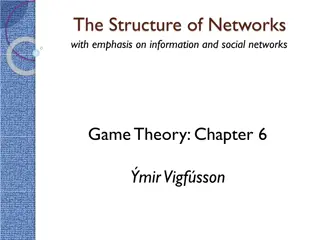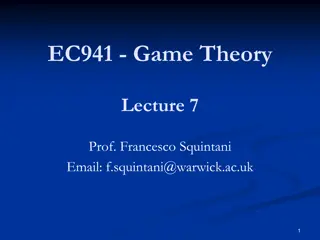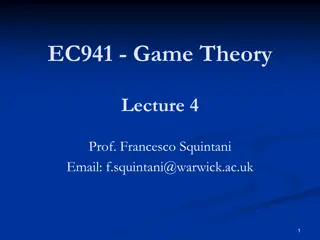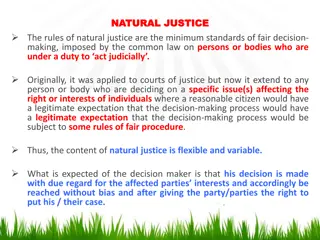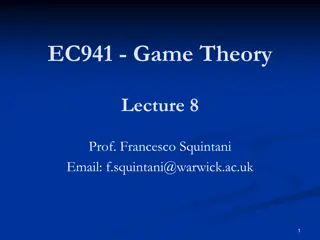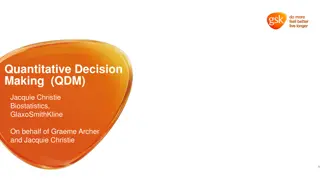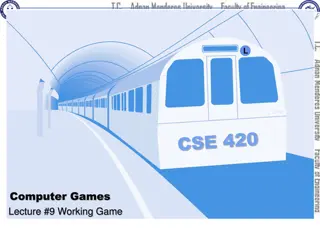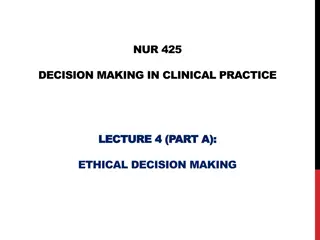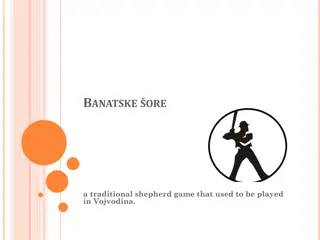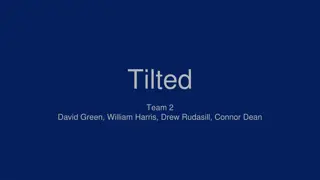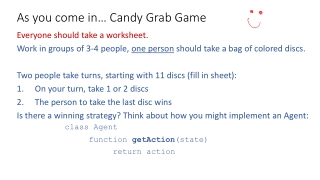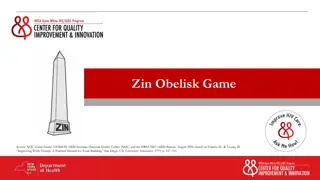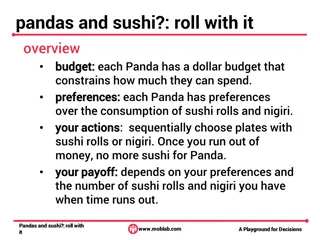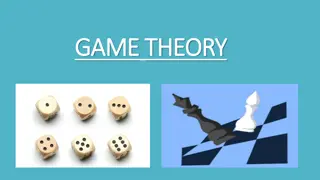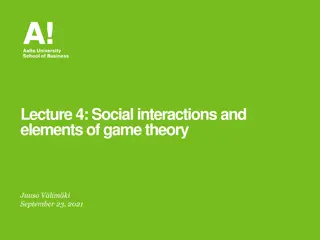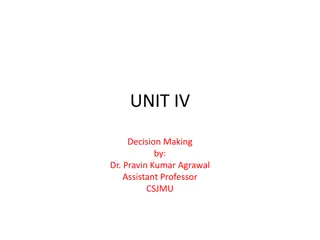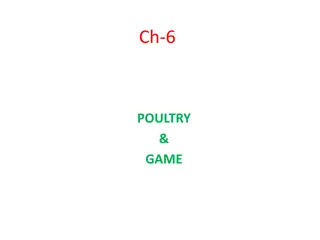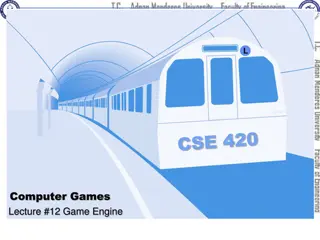Exploring Game Strategies and Decision Making
Delve into the world of game strategies and decision-making processes in zero-sum games like Tic-Tac-Toe, Checkers, and Chess. Discover how computers can analyze and optimize moves using algorithms like Minimax, creating challenging gameplay experiences. Learn about decision trees and the concept of optimal moves in turn-based games.
Download Presentation

Please find below an Image/Link to download the presentation.
The content on the website is provided AS IS for your information and personal use only. It may not be sold, licensed, or shared on other websites without obtaining consent from the author. Download presentation by click this link. If you encounter any issues during the download, it is possible that the publisher has removed the file from their server.
E N D
Presentation Transcript
Games Data Structures and Parallelism
Announcements Remember exercises 5-7 due today Individual Gitlab repositories for exercises 8-11 are out. P3 repos are out. You ve done a ton of work so far. -You ve implemented every core data structure. -And in 4-5 days less than students get during the regular school year. You should be proud of yourselves.
Lets Play a Game Of tic-tac-toe!
Tic-Tac-Toe What happened? -We both have strategies memorized that guarantee a draw (probably). Let s make a computer do it for us!
Tic-Tac-Toe Bot if(board is empty) play upper left if(we can win) make winning move if(opponent can win) block that move else{ //uhhh . }
Tic-Tac-Toe Bot Could we just list out all positions? There are 9! of them. What if we want a more complicated game? Like checkers. Or chess.
Zero-Sum Games Tic-Tac-Toe, Checkers, and Chess are all zero-sum games Meaning what s good for me is (equally) bad for you. Not all games are zero-sum (Prisoner s dilemma). All of these games are also turn-based Which will make writing our bot easier.
Checkers Bot Let s try checkers! Like our tic-tac-toe bot, we need to define the optimal move at every time. But we DEFINITELY can t hard-code this. Key idea: Computers are good at calculating. Make the bot re-derive what the best decision is every term.
Checkers Bot What s the best move? It s the one such that when our opponent responds with their move And we respond with our best move And they respond with their move . We win (or at least draw)
Minimax Now that we have our tree, how do we choose our move? How will our opponent respond in round 2? Assume they will make the best possible move for them. -i.e. the worst possible move for us.
Checkers Bot If we make this tree for tic-tac-toe, how big is it? The nodes at level ? have 9 ? options. Something like 9! nodes. For checkers? The analysis is harder. Checkers experts say there are about 10 possible moves each turn. So our tree will have 10? nodes after ? turns
Checkers Bot That s probably too big. If we want to play chess, the branching factor is much worse. (experts say about 35). We can t get all the way down the tree! At a certain point, we ll need to look at the board and estimate how things are going.
Minimax if(we re at a leaf) return board evalutation //we re done! else{ for(every possible move mv){ apply mv to the current board value = - minimax(board) undo mv from board if(value > bestVale) bestValue = value } }
Pruning The further down the tree we can go, the more likely we are to get a good move. What tricks could we use to get further down the tree? In tic-tac-toe, we didn t evaluate other moves once we knew our opponent could win in the next turn. Generalize that idea we don t need to evaluate further in a subtree if we know that optimal play won t take us there.
Alpha-Beta Pruning MAX 10 MIN Y 10 60 3 X MAX
Pruning There s no need to evaluate X If it s bigger than 3, min will choose Y to go in the left branch. If it s less than 3, min will choose the right branch but then at the root max will choose the left branch. The value doesn t matter! Don t bother going down that subtree.
Try by hand ? MAX X Y MIN A C D B MAX 5 7 23 33 2 3 14 15
Try by hand ? MAX X Y MIN 7 7 C D B MAX 5 7 23 33 2 3 14 15
Try by hand ? MAX X Y MIN 7 23 7 C D B MAX 5 7 23 33 2 3 14 15
Try by hand ? MAX 7 7 Y MIN 7 23 7 C D B MAX 5 7 23 33 2 3 14 15
Try by hand ? MAX 7 7 Y MIN 3 7 23 7 3 D B MAX 5 7 23 33 2 3 14 15
Pseudocode alphabeta(Position p, int alpha, int beta){ if(p is a leaf) return p.evaluate() for( every move mv){ p.apply(mv) int value = -alphabeta(p, -beta, -alpha) p.undoMove() if(value > alpha) alpha = value; if(alpha >= beta) //we won t be able to reach this move. return alpha; } return alpha;
Project 3 The games pdf on the webpage has more examples. P3 is out, you ll be making a chess bot. You ll implement minimax (sequentially first, then in parallel) Then you ll implement alphabeta (sequential only)


